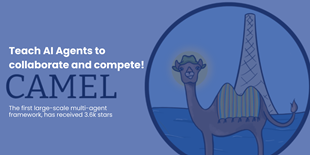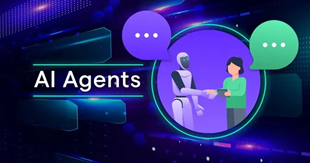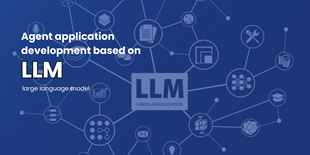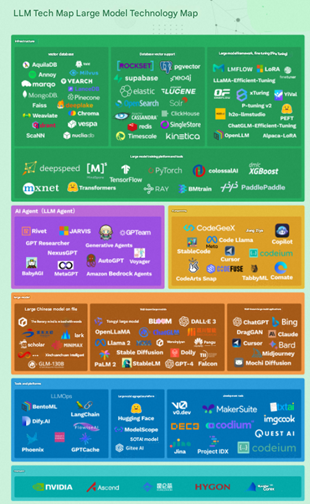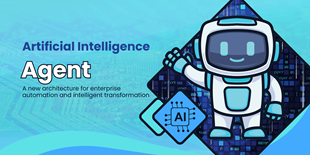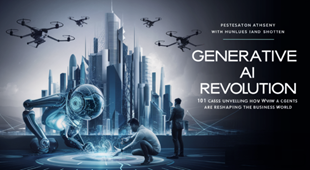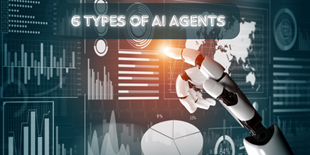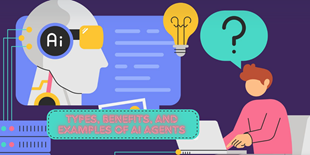Abstract: The multi-AI agent model is a powerful artificial intelligence architecture that uses the collaboration and interaction between multiple agents to solve complex problems, perform diverse tasks, and simulate complex system behaviors. In this model, each agent has independent perception, decision-making, and action capabilities, and optimizes the overall system goals through mutual collaboration and information sharing.
1. Overview of Multi-AI Agent Mode

1.1 Concept Origin and Development
The multi-AI agent model has a deep historical origin, which can be traced back to the early research in the field of distributed artificial intelligence. As early as the 1980s, the concept of distributed artificial intelligence began to emerge, and people envisioned simulating and solving complex real-world problems through the collaborative cooperation of multiple intelligent agents. This was the prototype of the multi-AI agent model.
At that time, researchers hoped to break the limitations of traditional single-agent systems in the face of complex tasks and environments, and explore how multiple agents can divide work, collaborate, and share information to achieve more powerful problem-solving capabilities. However, due to the limitations of computer technology, algorithm level, data resources, and other factors at the time, the development of multi-AI agent systems was still in the early stages of theoretical exploration and small-scale experiments.
As time goes by, in the 21st century, breakthroughs have been made in technologies such as machine learning and deep learning , injecting new vitality into the development of AI Agents. Especially in the field of natural language processing , the emergence of large language models (LLMs) has brought revolutionary changes. Pre-trained language models based on Transformer architecture, such as GPT and BERT, have demonstrated excellent natural language understanding and generation capabilities by training on massive text data, and even have certain reasoning and decision-making capabilities. These capabilities have become an important foundation for building a new generation of AI Agent systems, allowing AI Agents to transform from relatively simple intelligent programs to composite intelligent systems that can simulate human thinking and behavior.
AI Agents based on large models have gradually become a hot topic for research and application. People have begun to realize that a single AI Agent still has an upper limit on its capabilities when facing ultra-complex tasks and dynamically changing environments. As a result, the multi-AI Agent model has once again received high attention, and researchers have further explored how to enable multiple AI Agents with different functions and expertise to collaborate with each other to exert powerful performance beyond that of a single Agent. For example, in some complex game scenarios, multiple AI Agents can be responsible for different tasks such as strategy planning, resource management, and character behavior control, and cooperate with each other to defeat human players or cope with more challenging game levels; in intelligent transportation systems, different AI Agents can represent different vehicles, traffic signal facilities, etc. They communicate and coordinate with each other to jointly optimize traffic flow and reduce congestion.
Today, the multi-AI agent model has shown great application potential in many fields, and with the continuous advancement of technology, such as better communication protocols, more efficient collaboration algorithms and more complete technical frameworks (development frameworks represented by LangChain play an important role in the construction of multi-agent systems), it is booming towards a more mature, efficient and widely used direction, becoming a highly anticipated development direction in the field of artificial intelligence.

1.2 Core components
The multi-AI agent model contains several key core components, which cooperate and work together to support the effective operation of the entire system.
First, there are AI Agent individuals with different functions. These individuals are like different members of a team, each with unique expertise and responsibilities. For example, some AI Agents are good at information collection and analysis, and can extract valuable information from massive amounts of data; some focus on decision-making, and give action plans based on the collected information and preset goals and rules; others focus on performing specific tasks, such as controlling external devices and interacting with other systems. Each AI Agent has the ability to perceive the environment, make decisions, and perform actions, and is the basic functional unit in a multi-AI Agent system.
The second is the collaboration mechanism between them. The collaboration mechanism is the "glue" of the multi-AI Agent system, ensuring that each Agent can work together in an orderly manner. Common collaboration methods include task allocation mechanism, that is, according to the capabilities and characteristics of each Agent and the requirements of the task, the overall task is reasonably disassembled and assigned to different Agents to execute, avoiding task conflicts or waste of resources; there is also a coordination and control mechanism, during the task execution process, the work progress and status of each Agent are monitored and coordinated, and when unexpected situations occur or strategies need to be adjusted, timely intervention and re-planning are carried out to ensure that the entire system moves towards the established goals. For example, in the production scenario of a smart factory, the Agent responsible for production scheduling will assign production tasks to Agents in different production links based on order status, raw material inventory and other information, while the quality inspection Agent will monitor product quality in real time. Once a problem is found, the coordination and control mechanism will be activated to notify the relevant Agent to suspend production or adjust production parameters.
The way of information exchange is also an extremely important factor. Effective information transmission and sharing are required between multiple AI agents to achieve good collaboration. On the one hand, there is a direct communication method, where agents can directly send messages to exchange their respective states, information obtained, and decision intentions, just like face-to-face communication. On the other hand, there are indirect communication methods, such as transmitting information through shared environmental information or public resources. Each agent can understand the situation of other agents based on some changes in the environment or commonly accessed data. For example, in an intelligent transportation system, the AI agents corresponding to different vehicles can not only directly send each other information such as location and speed, but also adjust their driving strategies by observing the status of traffic lights (which is shared environmental information) to achieve coordinated passage with other vehicles.
Finally, there are various technical frameworks that support its operation. For example, LangChain provides convenient tools and standardized processes for the development of multi-AI Agent systems. LangChain integrates a variety of components and functions, which can help developers more easily realize the connection between agents, task scheduling, and integration with external tools. It allows developers to focus on designing the specific functions and collaboration logic of the Agent, without spending a lot of energy on tedious work such as the underlying technical construction and communication implementation, which greatly improves the development efficiency and reliability of the multi-AI Agent system, allowing more application scenarios to be implemented with the help of the multi-AI Agent model.
In short, these core components are intertwined and interact with each other, jointly building a powerful and flexible intelligent system architecture such as the multi-AI Agent model, which enables it to demonstrate unique advantages and broad application prospects in many fields.
2. Key Design Patterns of Multi-AI Agent Mode

2.1 Reflection
The reflection mode plays a vital role in the multi-AI agent system. It aims to enable the AI agent to learn to self-evaluate its output like humans, and then improve the output quality through multiple rounds of iterative improvements. Specifically, when the AI agent generates the initial output for a task, it will review and check the accuracy, completeness and logic of the output content. For example, the AI agent may generate a piece of code, and then self-check whether the code is grammatically correct, logically reasonable, and whether the operating efficiency can meet expectations based on the preset code specification standards or external feedback, and identify potential problems and room for improvement. Afterwards, optimization and iteration work is carried out based on these problems found, and it may go through multiple rounds of modification and improvement until the final output content meets satisfactory quality requirements.
This process is quite similar to the self-examination and revision of human writing. Take writing an article as an example. After we finish writing the first draft, we will go back to check whether the viewpoints of the article are accurate, whether the content is complete and detailed, whether the writing logic is smooth and reasonable, etc. If we find any problems, we will revise and polish it repeatedly until the quality of the article meets expectations. In practical applications, this reflection mode has also shown significant value. For example, in an intelligent question-and-answer system, the answer initially given by the AI Agent may only be a preliminary response based on conventional knowledge reserves, but through the reflection mode, it can further analyze whether the answer fully covers the questioner's intentions, whether there are logical loopholes, etc. After improvement, it can significantly reduce errors and omissions, making the answers more rigorous and comprehensive, thereby improving user satisfaction and the service quality of the entire system.
2.2 Tool Use
The tool usage model gives AI Agent the ability to call external tools and APIs , greatly expanding its original capabilities and making it no longer limited to its own built-in knowledge base and algorithm logic. Currently, the common types of tools that can be called by AI Agent are very rich and cover multiple fields.
In terms of information acquisition, there are web search tools, through which AI Agent can find the required content in the massive amount of information on the Internet. For example, when a user asks "Which coffee machine is the best according to reviewers' reviews?", AI Agent can call the search engine, download the relevant web content and analyze it to provide an accurate answer; it can also perform Wikipedia queries, academic literature retrieval, etc., to help obtain more professional and authoritative knowledge information.
Code-related tools are also important components, such as the Python interpreter, code execution environment, and unit testing tools, which enable AI Agents to execute code to complete complex computing tasks or verify the correctness of the code. For example, when answering questions like "If I invest $100 at a compound interest rate of 7%, how much money will I get in 12 years?", AI Agents can run the corresponding Python commands to accurately calculate the final amount.
In addition, there are data processing tools, including data analysis functions, format conversion tools, and data verification services, which help AI Agents to effectively process and analyze various types of data and dig out valuable information.
There is a specific application method for AI Agent to call these tools to complete tasks. First, AI will generate a request in a specific format to call the corresponding tool, such as generating an instruction string like {tool: web-search, query: "coffee maker reviews"} to request a web search. Then, after receiving the request, the system will execute the corresponding function, such as performing a web search operation in the above example. Finally, the execution result is returned to the AI Agent, and the AI Agent will continue to perform subsequent processing based on the returned result, thereby completing the entire task process and providing users with more accurate and rich information and services.
2.3 Planning
The planning mode enables AI Agent to decompose complex tasks into multiple steps, and to formulate, execute, and dynamically adjust plans, enabling it to demonstrate forward-looking and strategic thinking similar to that of humans. Its operating mechanism is that when faced with a complex task, AI Agent will first conduct task analysis, deeply understand the overall goal of the task and various requirements, identify key steps, and determine the dependencies between the steps. For example, when conducting project management, AI Agent must first clarify the main milestones of the project, such as requirements analysis, design, coding, testing, etc. in software development projects. These are key steps, and the coding step depends on the completion of the design step.
Next, the AI Agent will formulate strategies, design specific execution paths, select appropriate tools to assist in the execution of each step, and arrange the execution order of each step. During the execution of the task, it will also dynamically monitor the execution status. Once an abnormal situation occurs, such as a technical difficulty encountered in a certain step or changes in external conditions make the original plan unfeasible, the AI Agent will handle these abnormalities in a timely manner, optimize and adjust the execution plan, and re-plan the path to bypass obstacles to ensure that the entire task can be carried out in an orderly manner towards the established goal.
This planning mode is particularly suitable for complex multi-step task scenarios. However, in actual applications, due to various unpredictable situations that may occur during the execution of the task, a certain fault tolerance and adjustment mechanism is required. At the same time, given that the intelligence and decision-making capabilities of the AI Agent still have certain limitations, it is recommended to maintain manual supervision so that manual intervention can be made when necessary to avoid serious deviations and ensure that the task can be completed smoothly. For example, in the simulation planning of large-scale engineering construction projects, the AI Agent can develop a detailed construction step plan, but engineers need to supervise and review it. When encountering unexpected situations such as special geological conditions, the plan should be adjusted manually in a timely manner to ensure the smooth implementation of the project.
2.4 Multi-agent collaboration
In scenarios where multiple AI agents work together, different agents will play different roles, completing complex tasks through division of labor and collaboration, demonstrating the power of collective intelligence. Common roles include generator, reviewer, optimizer, and coordinator.
Generators are mainly responsible for creating content. For example, in a content creation project, the generator agent can write a first draft of an article or conceive creative content based on a given theme and requirements. Reviewers focus on quality control and conduct strict reviews of the content produced by the generator to check whether the content meets the standards and whether there are any errors or unreasonable aspects, just like an editor reviews a manuscript. Optimizers are responsible for improving and perfecting existing content. According to the opinions of the reviewers and other relevant requirements, they optimize and adjust the structure and expression of the content to improve its quality. Coordinators play a key role in task management and are responsible for coordinating the work of each agent, reasonably allocating tasks, monitoring the overall work progress, coordinating communication and collaboration between different agents, and ensuring the smooth progress of the entire workflow.
The interaction mechanism between them is also the key to ensure efficient collaboration. Agents share information with each other, such as the generator passing the content information to the reviewer, and the reviewer feeding back the review opinions to the optimizer. Through the flow of information, each agent can grasp the overall work situation. At the same time, they will also discuss opinions, discuss and exchange ideas on key issues or different solutions in the task, and put forward ideas and suggestions from different angles. On this basis, the results are integrated, and the results of the parts responsible for each agent are organically integrated to achieve collaborative optimization and cross-validation. The complementary advantages between agents can enhance the overall capabilities and jointly improve the quality of problem solving, so that complex tasks can be completed in the end, and even innovative solutions that are difficult for a single agent to achieve can be proposed, just like in a complex scientific research project, agents with different expertise work together to overcome difficulties and make breakthroughs.
3. Advantages of Multi-AI Agent Mode

3.1 Improve work efficiency and accuracy
In today's complex business scenarios, the multi-AI Agent model has demonstrated strong advantages due to the characteristics of each intelligent agent performing its own duties and cooperating with each other, and can significantly improve work efficiency and the accuracy of task completion.
Taking the multi-agent collaborative technology solution created by Deep Space Intelligence as an example, it is applied in multiple links such as enterprise marketing, sales, training, and after-sales, realizing efficient business processing in the form of multiple roles and multiple resources. In the marketing link, Deep Space Intelligence uses multi-agent collaboration to collect and analyze user consultation clues with high quality, and intelligently generates potential customer reports, which are then assigned to suitable sales by the corresponding agents, making sales follow-up more targeted and effectively improving the potential customer conversion rate. In the sales link, Deep Space Intelligence can arrange agents with different functions to collaborate based on the user's focus, independently and efficiently generate targeted sales videos, and use business agents with accumulated gold medal sales experience to guide basic sales, greatly improving the sales order rate.
In the field of content creation, we can also see the outstanding performance of the multi-AI Agent model. For example, in a large-scale copywriting project, some AI Agents are responsible for collecting relevant information and filtering out valuable content from massive amounts of text, images, audio and other information; some AI Agents act as creators and write the first draft of the article based on the collected information and given subject requirements; and some AI Agents are responsible for proofreading and reviewing to check whether there are any problems with the first draft in terms of grammar, logic, content accuracy, etc.; finally, there are special Agents to polish and optimize the reviewed content to improve the overall quality. Through the division of labor and collaboration among multiple Agents, complex creative tasks that originally required a lot of time and energy to be completed by humans can be completed in a short time with high quality, realizing the synchronous processing of multiple forms of resources and greatly improving work efficiency.
Looking at the intelligent transportation system, different AI Agents represent different vehicles, traffic signal facilities, and road condition monitoring equipment. The Agent responsible for the vehicle perceives the vehicle's position, speed, driving direction and other information in real time. The Agent corresponding to the traffic signal facility reasonably adjusts the duration of the signal light according to the traffic flow and other conditions. The Agent for road condition monitoring promptly transmits information such as road construction and congestion to other Agents. They communicate and coordinate with each other to jointly optimize traffic flow, avoid traffic congestion, and enable the entire transportation system to operate efficiently and orderly. This also fully demonstrates the value of the multi-AI Agent model in improving efficiency and accuracy.
In short, the multi-AI Agent model can achieve efficient integration and utilization of resources in different business scenarios through the collaborative cooperation between intelligent bodies, so that work efficiency and task accuracy can be significantly improved.
3.2 Replicating expert capabilities to achieve cost reduction and efficiency improvement
Another significant advantage of the multi-AI Agent model is that it can leverage the collaboration of different AI Agents to precipitate and replicate the business capabilities of domain experts, thereby achieving the company's goal of reducing costs and increasing efficiency.
Take the production operation of an enterprise as an example. In many complex production process links, they often rely on a small number of experienced experts to control, such as reaction parameter adjustment in chemical production and precision assembly in mechanical manufacturing. These experts rely on their years of accumulated experience and professional knowledge to ensure high-quality production. However, it takes a long time and is costly to train such experts, and the experts have limited energy and it is difficult to cover every production link and every production task.
The multi-AI Agent mode can change this situation by setting up different AI Agents in the system to let them learn and simulate the decision-making ideas and operation methods of experts when facing various production situations. For example, an agent that is good at data analysis collects various real-time data in the production process, such as temperature, pressure, raw material ratio, etc.; another agent with decision-making ability gives corresponding production adjustment suggestions based on these data and the experience of experts in dealing with similar situations in the past; and the execution agent is responsible for implementing the adjustment suggestions on specific production equipment operations. In this way, it is equivalent to replicating the ability of experts in the entire multi-AI Agent system, and it can play a role in every production task, so that ordinary employees can also reach the expert level of operation with the help of these agents.
The same is true in the financial field. Tianhong Fund, for example, has used AI Agent to develop products such as "Smart Collection" and "Smart Reading". The "Smart Collection" product can help researchers quickly browse and screen market research reports. This is actually due to the use of AI Agent to replicate the ability of senior researchers to screen information, so that ordinary researchers can also efficiently obtain valuable research report content; the "Smart Reading" product interprets and asks questions about specific research reports, and also deposits the ability of industry experts to interpret and analyze research reports into AI Agent, thereby empowering more staff and improving the work efficiency of the entire team.
For enterprises, replicating expert capabilities through the multi-AI Agent model can, on the one hand, reduce excessive reliance on a small number of experts, lower labor costs and training costs; on the other hand, it allows more grassroots employees to quickly get started with complex business, improving the overall business execution efficiency and quality, thereby achieving the good effect of reducing costs and increasing efficiency, and enhancing the company's market competitiveness.
3.3 Powerful scalability
During the development of an enterprise, business scenarios will continue to change and demands will become increasingly diversified. The multi-AI Agent model happens to have strong scalability and can adapt well to these changes.
For example, an e-commerce company involves multiple business scenarios such as product recommendation, inventory management, and customer service in its daily operations. Initially, the company can use the multi-AI agent model to build a basic workflow, with different AI agents responsible for different tasks. For example, there is a recommendation agent that accurately recommends products to users based on data such as user browsing history and purchase behavior; an inventory agent that monitors the inventory quantity of products in real time and predicts replenishment needs based on sales data; and a customer service agent that automatically responds to users' common consultation questions.
As the business expands, the company decides to start a live streaming business. At this time, it can build a new multi-agent workflow based on the original multi-AI Agent system. A new agent is added to be responsible for live streaming planning. It can analyze market trends, popular products, and characteristics of target user groups to develop a suitable live streaming plan; there is also a live streaming interactive agent to interact with the audience in real time, answer questions, collect feedback, etc.; and a data analysis agent to analyze various data during the live streaming process, such as the number of viewers, product clicks, conversion rate, etc., to provide a basis for subsequent live streaming optimization. In addition, companies can flexibly adjust the configuration and collaboration methods of each agent according to actual conditions. For example, according to different live streaming themes and product categories, adjust the recommendation strategy of the recommendation agent to better match it with the live streaming content.
For example, a manufacturing company originally mainly produced a single type of product, but as market demand changes, it begins to engage in the production of multiple different types of products. The multi-AI Agent mode can play a role, and the company can easily build a corresponding Agent workflow for the production process of new products, from raw material procurement agents, production process planning agents to quality inspection agents, etc. Each link can be configured on demand, and the collaborative relationship between agents can be easily changed to adapt to the special requirements of the new product production process. For example, the quality inspection standards of different products are different, and the quality inspection agent can adjust the inspection parameters and judgment logic accordingly.
In short, the multi-AI Agent model, with its powerful scalability, enables enterprises to flexibly build and adjust the configuration and collaboration methods of intelligent entities when facing changes in different business scenarios, meet diverse business needs in one stop, and help enterprises continue to grow and develop in an ever-changing market environment.
4. Application Scenario Examples of Multi-AI Agent Mode

4.1 Operation and maintenance
4.1.1 Troubleshooting scenarios
In a large-scale operation and maintenance environment, network failures are a common and difficult problem. For example, in a data center with many servers and a complex network architecture, once a network failure occurs, the operation and maintenance personnel often need to quickly locate and solve the problem to reduce the impact on the business.
At this time, the multi-AI Agent mode can play an important role. The manager acts as the core coordinator. When receiving a network fault report, it will quickly broadcast the fault-related information to multiple agents for analysis in different dimensions. For example, the network diagnosis agent will analyze the network topology, network traffic, connection status between nodes and other information. It can detect whether there are network loops, bandwidth congestion points or network equipment failures. The server diagnosis agent focuses on the server side, checking the server's network interface status, whether the network card driver is normal, whether there is packet loss, etc. At the same time, it analyzes the server's resource usage to determine whether network communication is affected by resource exhaustion; there is also an application diagnosis agent, which will check whether the application's network configuration is correct and whether there are abnormal network requests caused by the application's own logic from the perspective of various applications running on the network.
Each Agent uses its powerful large language model and built-in expertise and algorithms to conduct in-depth analysis of the data in the dimensions it is responsible for, and then generates a corresponding diagnostic report. Finally, these diagnostic reports of different dimensions are summarized to the Manager, which then conducts comprehensive compilation and generates a comprehensive fault report. This report can clearly present key information such as the possible cause of the network fault, the location of the fault, and the relevant impact range, helping operation and maintenance personnel to quickly locate the problem, and then take targeted solutions to efficiently repair the network fault and restore normal business operations.
4.1.2 Operation and maintenance activity enhancement scenarios
In daily system upgrade and other operation and maintenance activities, the commander plays a key role and is responsible for the command and dispatch of the entire operation and maintenance task. Taking an operating system version upgrade as an example, first, the commander will break down the task according to the requirements and goals of the upgrade task and clarify the specific requirements of each link.
Then, Commander will instruct the orchestrator to perform specific tasks. According to the instructions, the orchestrator will complete a series of operations in sequence, such as backing up important data, downloading upgrade packages, shutting down related services, and performing system updates. In this process, the execution status of each step will be fed back to Commander in real time so that it can grasp the overall progress.
At the same time, the auditor is also working synchronously. It will verify each task completed by the orchestrator according to the pre-set standards and specifications, such as checking whether the data backup is complete, whether the integrity check of the upgrade package has passed, whether the service shutdown and startup are normal, etc. Once the auditor finds that a certain link does not meet the requirements, it will notify the Commander in time, and the Commander will coordinate with the orchestrator to re-execute the corresponding task or take other remedial measures according to the situation.
Through this close collaboration between commanders, orchestrators, and reviewers, and with the help of a multi-agent collaborative working mechanism, it is possible to ensure that operation and maintenance tasks are completed efficiently and accurately in strict accordance with the predetermined plan, avoiding upgrade failures and data loss caused by human negligence or improper operation , and effectively improving the quality and efficiency of operation and maintenance activities.
4.2 E-commerce industry
4.2.1 Personalized recommendation scenarios
In the e-commerce field, providing users with accurate and personalized product recommendations plays a vital role in improving user satisfaction and corporate sales. AI Agent achieves this goal by collecting and analyzing multi-dimensional data of users.
For example, when a user logs into an e-commerce platform, the AI Agent will obtain the user's past shopping history to understand the categories of goods the user has purchased, the frequency of purchases, the price range, etc. At the same time, it will also pay attention to the user's browsing behavior, such as which product pages the user frequently browses, how long they stay on a product details page, whether they have added certain products to the shopping cart but have not placed an order, etc. In addition, the preferences set by the user on the platform, such as favorite colors, styles, brands, etc., will also be included in the analysis scope.
Based on this rich data, AI Agent uses machine learning and deep learning algorithms to conduct modeling analysis and dig out users' potential interests and purchasing needs. Then, it selects products that meet users' personalized needs from the massive product library and recommends them to users according to the matching degree. For example, for a user who often buys sports equipment and prefers a certain brand of running shoes, and recently frequently browses outdoor backpacks, AI Agent may recommend the brand's new running shoes, matching sportswear, backpacks suitable for outdoor sports and other related products.
This kind of personalized recommendation makes it easier for users to discover their favorite products, increases the possibility of purchase, and thus improves user satisfaction and loyalty to the platform, while also bringing more sales opportunities and profits to e-commerce companies.
4.2.2 Intelligent customer service scenario
E-commerce platforms receive a large number of inquiries, order processing, and returns from users every day. AI Agent, with the help of natural language processing and machine learning technology, can automatically and efficiently deal with these situations and provide users with high-quality services.
When a user sends a consultation message to the customer service window, the AI Agent will first understand and parse the user's natural language to identify the user's question intent. For example, if a user asks "Is the size of this dress too big or too small?", the AI Agent can accurately determine that this is a consultation question about the size of the product. Then, it will search for relevant answer information in the background knowledge base, which contains detailed parameters of various products, answers to frequently asked questions, and other content.
For order processing issues, such as when users ask "When will my order be shipped?", AI Agent can combine the logistics information in the order system, warehouse inventory, and the merchant's shipping rules, etc., to give users an accurate estimate of the shipping time in real time. When facing a return request, AI Agent will guide users to complete the return application process according to the platform's return policy, and inform users of what they need to prepare, such as whether they need to keep the product packaging and the return courier method.
Throughout the entire process, AI Agent can automatically answer most common questions, and only transfers to human customer service when encountering complex questions that cannot be accurately answered. This not only greatly improves the efficiency of customer service and saves labor costs, but also allows human customer service to have more energy to deal with complex problems that require professional knowledge and communication skills, thereby improving the overall service quality.
4.3 Education
4.3.1 Personalized learning platform scenario
In the field of education, each student has different learning progress, interests, hobbies, and learning abilities. AI Agent can help build a personalized learning platform to meet the differentiated needs of students.
Taking online learning courses as an example, AI Agent will first collect students' learning data, such as students' course learning progress in various subjects, whether they have quickly mastered the basic knowledge, or are still confused about certain knowledge points after repeated learning; understand students' interest in different subjects, whether they are more interested in science content such as mathematics and science, or prefer humanities such as Chinese and history; at the same time, analyze students' answers in various tests and homework, and evaluate their learning ability level, such as the strengths and weaknesses of logical thinking ability, memory, and comprehension ability.
Based on these comprehensive analyses, AI Agent recommends appropriate learning resources and tutoring content for students. For students who have a fast learning progress, strong ability and interest in mathematics, it may recommend some extended mathematics competition courses, high-level mathematical thinking training materials, etc.; for students who have difficulty in memorizing English words and have a slower learning progress, it will push learning resources such as interesting word memorization methods and basic grammar consolidation exercises suitable for their level, and arrange corresponding tutoring content, such as regular word dictation and simple dialogue exercises, to help students gradually improve their English level.
Through this personalized learning resource and tutoring recommendation, students' interest in learning can be stimulated, allowing them to make continuous progress at a learning pace that suits them, effectively improving their learning efficiency.
4.3.2 Intelligent tutoring and Q&A scenarios
In the process of learning, students will inevitably encounter various problems. AI Agent uses natural language processing technology to provide 24/7 online question-answering services to answer students' questions at any time.
When students ask questions through the learning platform, such as "What are the real-life applications of Newton's second law of physics?", the AI Agent will first understand the semantics of the question and analyze that the core of the question is about the practical application of Newton's second law. Then, it will search for relevant accurate answers in its own knowledge system, which covers rich information such as textbook content, classic cases, and answers to frequently asked questions in various disciplines.
After finding the answer, the AI Agent will reply to the student in a clear and understandable way. In addition to providing specific application cases, it may also further explain the principles behind the application and how to better understand Newton's second law through these cases. If the student still has questions about the reply and continues to ask, the AI Agent can also analyze and answer again based on the new questions, and continue to communicate in depth until the student thoroughly understands the relevant knowledge points.
This intelligent tutoring and question-answering service breaks the limitations of time and space. Students can get timely help whenever and wherever they encounter learning problems. It provides strong support for students' independent learning and helps cultivate students' learning enthusiasm and independent thinking ability.
5. Development Trends and Challenges of Multi-AI Agent Model
5.1 Development Trend
5.1.1 Enterprise application integration trends
According to a report by Capgemini Management Consulting, 82% of the more than 1,100 companies surveyed with annual revenue of $1 billion or more plan to integrate multiple AI Agents into one in the next three years, which means that many companies have realized the advantages of integrating multiple AI Agents and hope to build a more powerful application system. In terms of enterprise size, large companies are more actively embracing generative AI. For example, about 49% of companies with annual revenue of $20 billion or more are actively deploying generative AI. They often have more sufficient resources and capabilities to carry out the integration of multiple AI Agents, trying to improve overall operational efficiency and business innovation capabilities through integration.
Different industries have different focuses on the layout of multi-AI agent applications. For example, in the aerospace and defense industry, 88% of organizations have invested in generative AI, hoping to use multi-AI agents to improve the processing capabilities of related complex tasks; while the proportion in the retail industry is 66%, which focuses more on using multi-AI agents to optimize marketing, customer service and other links. It can be seen that various industries are actively exploring the integrated application of multi-AI agents based on their own business characteristics and development needs, in order to better cope with market competition and business challenges and achieve intelligent upgrades.
5.1.2 Technology expansion trends
The multi-AI agent model is developing towards a multimodal form, and is no longer limited to simple text processing, but is gradually expanding to areas such as image analysis. For example, with the release of multimodal technologies (such as SORA and VU), it is predicted that 80% of videos on the Internet in the future will be generated by AI, and AI-generated video content will even exceed 80% of human-generated content, which also provides a broad space for the application of multi-AI agents in video-related fields.
In the manufacturing field, multi-AI Agents can use multi-modal capabilities such as image recognition to conduct real-time quality inspections on products on the production line and identify whether there are defects in the product appearance. In the field of autonomous driving , multi-AI Agents can not only process text-based traffic rules and road conditions, but also analyze image data captured by cameras to accurately judge road conditions, identify other vehicles and pedestrians, and thus plan driving routes more safely and effectively. In the security field, using multi-modal functions such as image analysis, multi-AI Agents can monitor surveillance images in real time, detect abnormal situations in a timely manner and issue warnings, thereby improving safety prevention capabilities. It can be seen that the multi-modal multi-AI Agent model has huge potential application prospects in many fields and is expected to help various industries achieve more efficient and intelligent development.
5.2 Challenges
5.2.1 Technical difficulties
At present, some AI agents have the problem of "hallucination", such as ChatGPT and some generative AI tools, which may give inaccurate answers, even for some factual content. This is mainly because their working method is to guess the next word, resulting in unreliable output answers. In addition, when facing complex tasks, the stability of collaboration between multiple AI agents needs to be improved. Different agents may encounter problems such as poor information transmission and inconsistent coordination during the execution of tasks, which will affect the smooth progress of the entire task.
In addition, AI Agents still need to improve their adaptability to new tasks. When encountering new situations that are very different from the training data, they may not be able to adapt well and make reasonable decisions, and their performance may be significantly reduced or they may produce erroneous outputs. These technical difficulties have, to a certain extent, limited the multi-AI Agent model from exerting a stronger performance, and researchers need to conduct further in-depth research to explore more effective solutions.
5.2.2 Difficulties in application implementation
Enterprises face many challenges when implementing the multi-AI agent model. The first is data security and privacy protection. When AI agents process large amounts of corporate or personal data, they often involve sensitive information, such as trade secrets and personal privacy. Once the data is leaked or illegally accessed, it will cause irreversible damage to users, which makes enterprises have many concerns when applying it.
Secondly, the integration of multiple AI Agents with existing business systems is also a major challenge. The company's existing business processes and system architecture have their own characteristics and logic. How to seamlessly embed multiple AI Agents into them and achieve collaborative work without causing conflicts or affecting the normal operation of the original business is an issue that companies need to focus on.
To meet these challenges, on the one hand, enterprises must strengthen data security management and adopt advanced encryption, access control and other technical means to ensure data security; on the other hand, they must do a good job in system integration planning, conduct in-depth analysis of existing business systems, and gradually achieve effective integration of multiple AI Agents with business systems through reasonable interface design and process adjustments, thereby promoting the smooth implementation of the multi-AI Agent model in enterprises.
6. How to deeply learn and apply the multi-AI agent model
6.1 Recommended learning resources
For readers who want to learn more about the multi-AI agent model, there are many high-quality learning resources to choose from.
Books :
- "Design and Application of Agent and Multi-Agent Systems", this book first introduces the research history and theory of Agent, then proposes the Agent-based distributed environment computing model MADOCE, and then conducts an in-depth discussion on multi-agent systems and how to design them. It is suitable for readers who want to understand the design principles of multi-AI Agent systems from an academic perspective.
- "Introduction to Multi-Agent Systems" has a rigorous structure. At the beginning, it lists the abilities that readers should have, such as understanding high-level programming languages, pseudocode, and distribution, being familiar with the basic concepts and content of artificial intelligence, and having basic knowledge of sets and logical symbols. The content covers preliminary basic knowledge, introduction to intelligent agents, introduction to multi-agent systems, and discussion on the application of multi-agent systems. It is very helpful for systematically learning knowledge related to multi-AI agents. Teachers and students of relevant majors in universities can deepen their understanding of this field by reading it.
Online course section :
- The AI-AGENT online training camp launched by NVIDIA is very good. It provides a four-day systematic learning journey. Participants can deeply explore the charm of the NVIDIA NIM platform, learn how to build LLM-RAG and multimodal agents based on the platform, and fully learn the knowledge of the three modules of LLM, RAG and AI-Agent. Through rich online experimental sessions, they can master the skills of using NIM to build diverse and multifunctional agents. There will also be AI experts online to answer questions and guide experimental operations to help learners better master relevant skills.
- There are also many AI-related courses on platforms such as MOOC, Coursera, and Udacity, many of which involve multi-AI agent content. These courses often cover a wide range from basic to advanced, and can meet the needs of learners with different foundations, helping everyone to gradually understand and master the relevant knowledge of the multi-AI agent model.
Open source project resources :
- LangChain is a framework built around LLM. It is suitable for building applications such as chatbots , generative question-answering, summarization, etc. It has advantages such as multi-language support, modular design, rich components and integration structure, and a complete ecosystem. Although it has disadvantages such as a steep learning curve, dependence on external AI services and APIs, and possible increased integration and maintenance costs, it is a good learning and practice tool for developers who want to build multi-AI Agent systems and apply them to actual project development.
- AutoGPT is a fully autonomous AI agent created using GPT-4. It demonstrates the powerful capabilities of the GPT-4 language model, which can bring together and connect the "thoughts" of the LLM to autonomously achieve any goal set by the user. By studying its source code, we can understand how to create an AI agent with a high degree of autonomy, which is very inspiring for learning autonomous decision-making of intelligent agents in multi-AI agent modes.
- There is also Microsoft's autogen, which supports multi-agent dialogue. Multiple agents can cooperate with each other to solve user tasks. The agents are customizable and convertible, and also allow humans to participate. By analyzing its code logic and implementation methods, it helps to grasp the key points of collaboration between multiple AI agents.
In short, with the help of these rich learning resources, whether it is from the learning of theoretical knowledge or the improvement of practical operation skills, it can help readers better understand the principles and application methods of the multi-AI Agent model.
6.2 Suggestions for practical application
For readers from different industries and technical backgrounds who want to apply the multi-AI agent model in practice, they can refer to the following practical suggestions and proceed step by step.
For beginners with relatively weak technical background or non-technical industry practitioners :
You can start with some small-scale tests in a single scenario. For example, in the e-commerce industry, if you want to try to use multiple AI agents for personalized recommendations, you can initially choose a certain category of product data as the basis, observe how AI agents collect and analyze data on users browsing and purchasing products in this category, and then make simple recommendations to understand the operating mechanism of the entire process. For example, in the field of education, first use AI agents to analyze students' mastery of knowledge points in a certain subject based on learning materials, and try to give some basic learning suggestions. Through such small-scale, single-scenario practices, you can become familiar with the basic application methods of the multi-AI agent model without having to involve complex multi-disciplinary and multi-link application scenarios from the beginning.
For developers with certain programming foundation and technical capabilities :
You can start with open source projects for practice. Taking the LangChain framework as an example, first study its documentation in depth and master the basic process of using it to build a multi-agent system, such as realizing the connection between agents, task scheduling, and integration with external tools. Then you can try to do some simple extension applications based on it, such as building a small intelligent question-and-answer system involving the collaboration of agents with different functions, one responsible for collecting knowledge related to the question, one responsible for organizing the answer logic, and one responsible for replying the answer to the user in an appropriate way. Through this practice based on the open source framework, we can deeply understand the details of multi-AI Agent in actual development and the problems that may be encountered, and continuously optimize and improve.
When applying multi-AI agent mode in complex projects or across industries :
Adequate preliminary planning and demand analysis should be done. For example, when applying multiple AI Agents in an intelligent transportation system, it is necessary to first sort out the various entities involved, such as the corresponding Agent roles and functions of different types of vehicles, various traffic signal facilities, road condition monitoring equipment, and the information interaction and collaboration needs between them. At the same time, it is necessary to take into account possible complex situations, such as the impact of sudden traffic accidents, temporary road construction, etc. on the entire system, and design corresponding response mechanisms and coordination strategies in advance to ensure that each AI Agent can still collaborate effectively in a complex and changing environment. And during the implementation of the project, continuous testing and feedback adjustments should be carried out.
7. Scenario Setting: Intelligent Book Recommendation System
In this case, we will build an intelligent book recommendation system, which consists of multiple AI agents with different functions, and realizes the function of accurately recommending books to users through collaboration. The agents in the system include: user analysis agent, book classification agent, evaluation analysis agent and recommendation generation agent.
7.1 User Analysis Agent
Responsible for collecting and analyzing users' basic information (such as age, gender, reading history, etc.), browsing behavior (browsed book categories, dwell time, etc.), search keywords and other data to understand users' reading interests and preferences.
7.2 Book Classification Agent
Classify the books in the library, mark each book's category (such as novels, biography, history, science and technology, etc.), theme (such as love, war, artificial intelligence, space exploration, etc.) and appropriate reading age level and other information.
7.3 Evaluation and Analysis Agent
Collect and analyze user reviews and ratings data of books, extract key information about book quality, content appeal, readability, etc., to provide reference for recommendations.
7.4 Recommended Agent Generation
The user preference information provided by the user analysis agent, the book feature information provided by the book classification agent, and the evaluation information provided by the evaluation analysis agent are integrated to generate a personalized book recommendation list.
7.5 Code Implementation
7.5.1 Define the Agent class
First, we define a basic Agent class, which contains the basic properties and methods of Agent.
javascript
class Agent:
def __init__(self, name):
self.name = name
self.knowledge = []
def receive_info(self, info):
self.knowledge.append(info)
def process(self):
pass
def send_info(self, other_agent):
pass
7.5.2 Implement the functions of each agent
javascript
class UserAnalysisAgent(Agent):
def process(self):
# Simulate the collection of user information (here simplified to preset data)
user_info = {
"age": 25,
"gender": "male",
"reading_history": ["The Lord of the Rings", "1984"],
"browsing_behavior": {"category": "Fantasy", "time": 120},
"search_keywords": ["science fiction"]
}
return user_info
- Book Classification Agent
javascript
class BookClassificationAgent(Agent):
def __init__(self, name, book_library):
super().__init__(name)
self.book_library = book_library
def process(self):
# Categorize the books in the library (here simplified to preset classification information)
for book in self.book_library:
if "science" in book.lower():
self.book_library[book]["category"] = "Science"
elif "fiction" in book.lower():
self.book_library[book]["category"] = "Fiction"
# More classification logic can be added
return self.book_library
- Evaluation and Analysis Agent
javascript
class ReviewAnalysisAgent(Agent):
def process(self):
# Simulate the collection of book review information (here simplified to preset data)
review_data = {
"The Lord of the Rings": {
"rating": 4.5,
"reviews": ["Great story, very immersive.", "Love the world-building."]
},
"1984": {
"rating": 4.0,
"reviews": ["Thought-provoking, a classic.", "A bit depressing but important."]
}
}
return review_data
- Recommended Agent Generation
javascript
class RecommendationGenerationAgent(Agent):
def process(self, user_info, book_library, review_data):
# Generate recommendations based on user information, book categories, and review data
recommended_books = []
for book, details in book_library.items():
if details["category"] in user_info["browsing_behavior"]["category"] or \
any(keyword in book.lower() for keyword in user_info["search_keywords"]):
rating = review_data[book]["rating"] if book in review_data else 0
if rating >= 4.0:
recommended_books.append(book)
return recommended_books
7.5.3 Realize collaboration and information transmission between agents
We use a Coordinator class to manage the collaboration and information transmission between Agents.
javascript
class Coordinator:
def __init__(self):
self.user_analysis_agent = UserAnalysisAgent("User Analysis Agent")
self.book_classification_agent = BookClassificationAgent("Book Classification Agent", {})
self.review_analysis_agent = ReviewAnalysisAgent("Review Analysis Agent")
self.recommendation_generation_agent = RecommendationGenerationAgent("Recommendation Generation Agent")
def run(self):
# Run the user analysis agent and obtain user information
user_info = self.user_analysis_agent.process()
self.user_analysis_agent.send_info(self.recommendation_generation_agent)
# Run the book classification agent and obtain the classified book library
book_library = self.book_classification_agent.process()
self.book_classification_agent.send_info(self.recommendation_generation_agent)
# Run the evaluation analysis agent and obtain evaluation data
review_data = self.review_analysis_agent.process()
self.review_analysis_agent.send_info(self.recommendation_generation_agent)
# Run the recommendation generation agent and obtain the recommendation list
recommended_books = self.recommendation_generation_agent.process(user_info, book_library, review_data)
print("Recommended books:", recommended_books)
7.5.4 Test code
We can test the intelligent book recommendation system in the following ways:
javascript
if __name__ == "__main__":
coordinator = Coordinator()
coordinator.run()
VI. Summary and Outlook
This case demonstrates the application of the multi-AI agent model in the intelligent book recommendation system, and realizes personalized book recommendations through the collaboration between multiple agents. However, in actual applications, more complex situations may be faced, such as large-scale data processing, real-time recommendation requirements, and more complex user behavior analysis. In the future, we can further optimize the agent's algorithm and collaboration mechanism, introduce more advanced machine learning and deep learning technologies to improve the accuracy and efficiency of the recommendation system, and expand the model to other fields, such as intelligent customer service, intelligent medical care, intelligent transportation, etc., to give full play to the greater potential of the multi-AI agent model.
7.6 Summary and Outlook
This case demonstrates the application of the multi-AI agent model in the intelligent book recommendation system, and realizes personalized book recommendations through the collaboration between multiple agents. However, in actual applications, more complex situations may be faced, such as large-scale data processing, real-time recommendation requirements, and more complex user behavior analysis. In the future, we can further optimize the agent's algorithm and collaboration mechanism, introduce more advanced machine learning and deep learning technologies to improve the accuracy and efficiency of the recommendation system, and expand the model to other fields, such as intelligent customer service, intelligent medical care, intelligent transportation, etc., to give full play to the greater potential of the multi-AI agent model.
